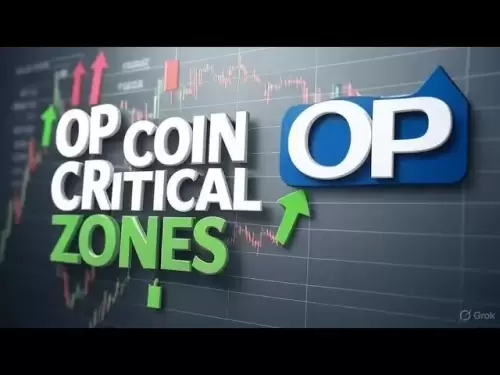 |
|
 |
|
 |
|
 |
|
 |
|
 |
|
 |
|
 |
|
 |
|
 |
|
 |
|
 |
|
 |
|
 |
|
 |
|
Cryptocurrency News Articles
Stablecoins, Risk Reward, and Regulation: Navigating the Crypto Minefield
Jun 28, 2025 at 01:19 pm
Circle's stock plunge highlights the volatility of stablecoin-related equities amidst regulatory uncertainty. Investors must weigh risks against potential rewards.

Stablecoins, Risk Reward, Regulation: the trifecta shaping the future of digital finance. Recent market dips and regulatory clashes underscore the need for a balanced approach.
The Circle Plunge: A Wake-Up Call
Circle Internet Group's stock experienced a significant drop in June 2025, sparking debate about the risks and opportunities in the stablecoin market. The volatility underscores the critical question: How should investors assess the value of companies like Circle, which operate at the intersection of blockchain, regulation, and macroeconomics?
Overvaluation Concerns and Profit-Taking
Circle's stock surge post-IPO was unsustainable. Analysts pointed to overvaluation and profit-taking as key factors. The initial hype attracted speculative investors eager to cash in, creating a "buy the rumor, sell the news" dynamic. This was further exacerbated by regulatory risks and Circle's dependence on Coinbase.
Regulatory Uncertainty: GENIUS Act vs. STABLE Act
The Senate's GENIUS Act offered a path to legitimacy for stablecoins, but the House's STABLE Act threatens stricter rules. Provisions like yield restrictions could cut Circle's core revenue. The legislative outcome will significantly impact Circle's trajectory, potentially creating a "Goldilocks" scenario or forcing a business model pivot.
Illicit Activities and Stablecoins: A Growing Concern
A recent report from the Financial Action Task Force (FATF) reveals that most illegal activities associated with cryptocurrency ledgers are now linked to stablecoins. Drug traffickers and North Korean hackers are increasingly utilizing these digital assets. This concerning trend underscores the need for enhanced regulation and oversight.
The Risks of Unhosted Wallets
The FATF report raises alarms about the use of stablecoins in "unhosted wallets," which operate outside financial institutions' oversight. This facilitates criminal activities, making it easier to evade detection. The features that make stablecoins appealing—low transaction costs and reduced volatility—also attract criminals.
Call for Enhanced Regulation
The FATF urges governments to enhance licensing and registration processes for virtual asset companies. Identifying individuals behind decentralized blockchain applications remains a challenge. Robust regulatory frameworks are crucial to safeguard the financial system.
Global Regulatory Landscape: A Complex Tapestry
Different countries are adopting distinctive regulatory policies based on their economic systems and strategic considerations. From the US SEC's game with crypto companies to the EU's MiCA Act, the global crypto regulatory landscape is complex and diverse.
Hong Kong: A Contrasting Approach
Hong Kong aims to be an international financial center by embracing Web3 and virtual assets, especially allowing retail trading and launching virtual asset ETFs. This contrasts with mainland China's strict ban, positioning Hong Kong as a regulated virtual asset market.
EU's MiCA Act: A Benchmark for Compliance
The EU's MiCA Act establishes a unified regulatory framework, addressing legal ambiguity, stablecoin risks, and insider trading. It sets detailed provisions on crypto asset issuance, service provider authorization, and anti-money laundering.
Personal Thoughts
Stablecoins present a unique opportunity to bridge traditional finance and the digital world. However, their potential for illicit use and the volatility of related equities demand careful consideration. Clear, consistent, and comprehensive regulation is essential to foster innovation while mitigating risks. For example, The FATF report shows the importance of regulation. Without it, illicit activities will be conducted using stablecoins.
Final Thoughts
Navigating the world of stablecoins is like walking a tightrope. It's a balancing act between risk and reward, innovation and regulation. But hey, who doesn't love a little excitement? Just remember to buckle up, do your research, and maybe, just maybe, you'll strike gold in this digital frontier!
Disclaimer:info@kdj.com
The information provided is not trading advice. kdj.com does not assume any responsibility for any investments made based on the information provided in this article. Cryptocurrencies are highly volatile and it is highly recommended that you invest with caution after thorough research!
If you believe that the content used on this website infringes your copyright, please contact us immediately (info@kdj.com) and we will delete it promptly.





























































